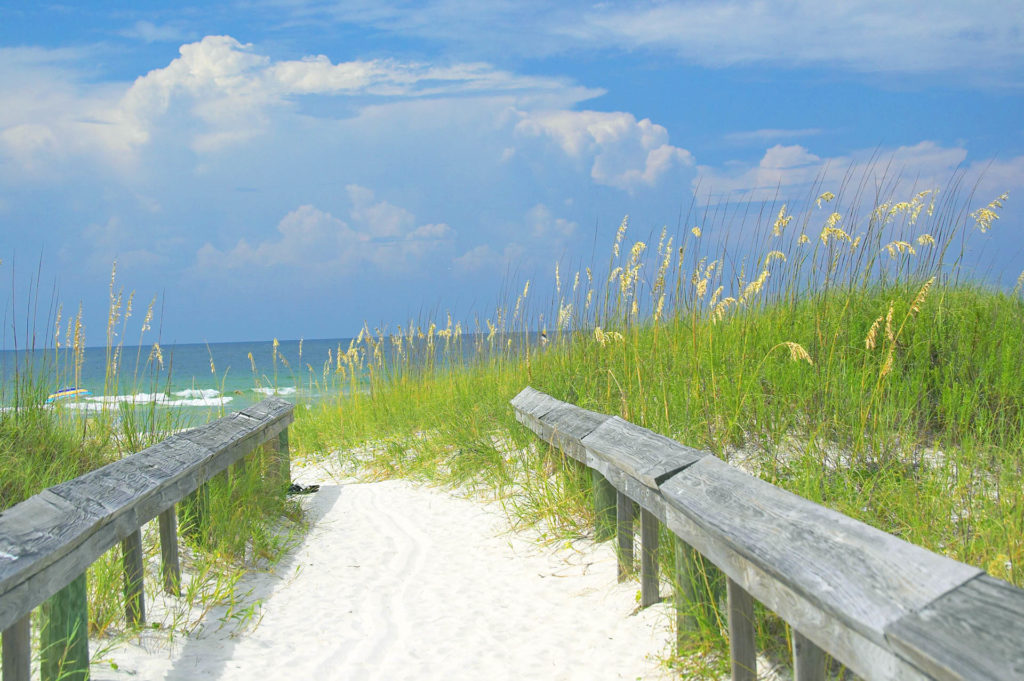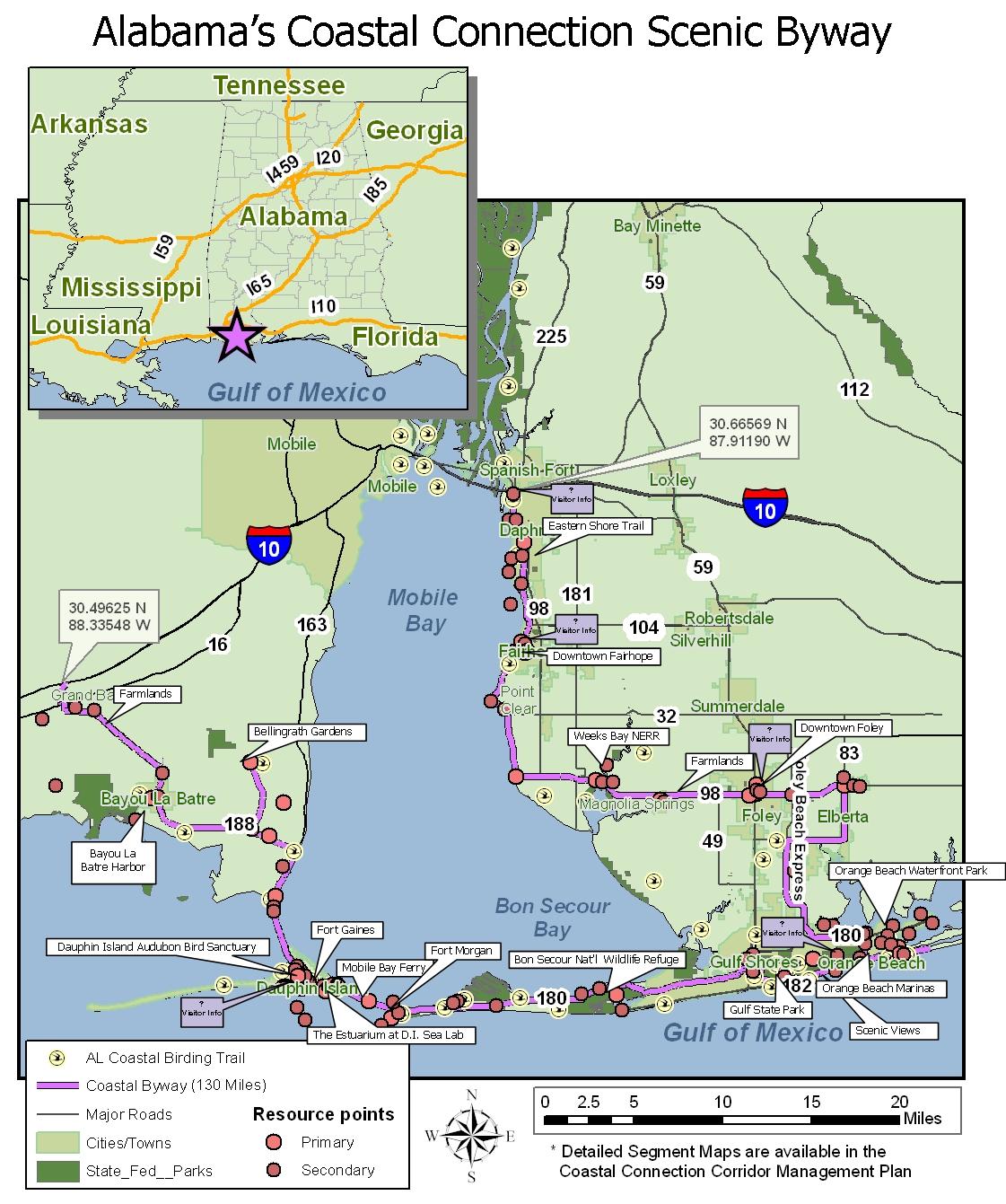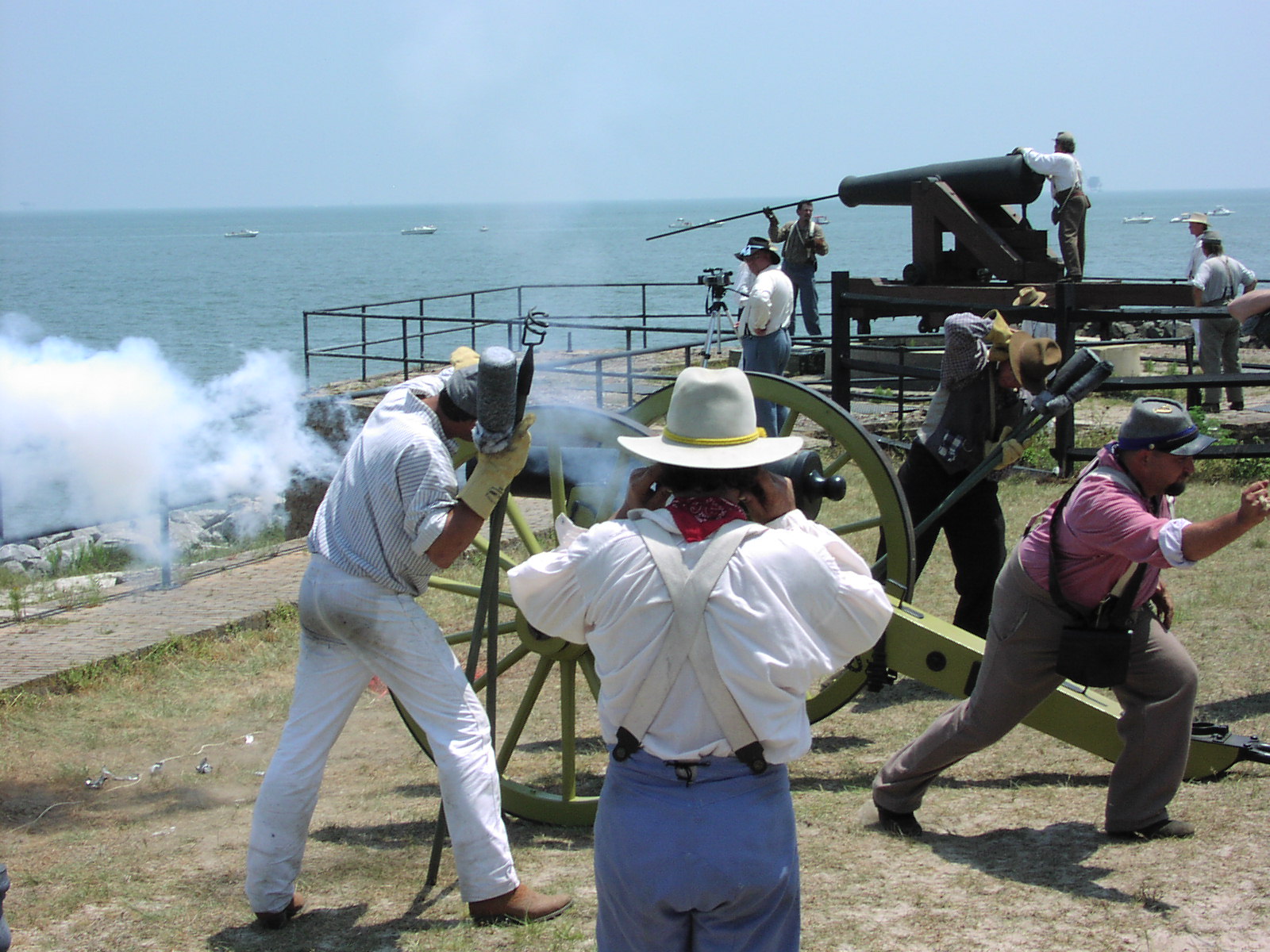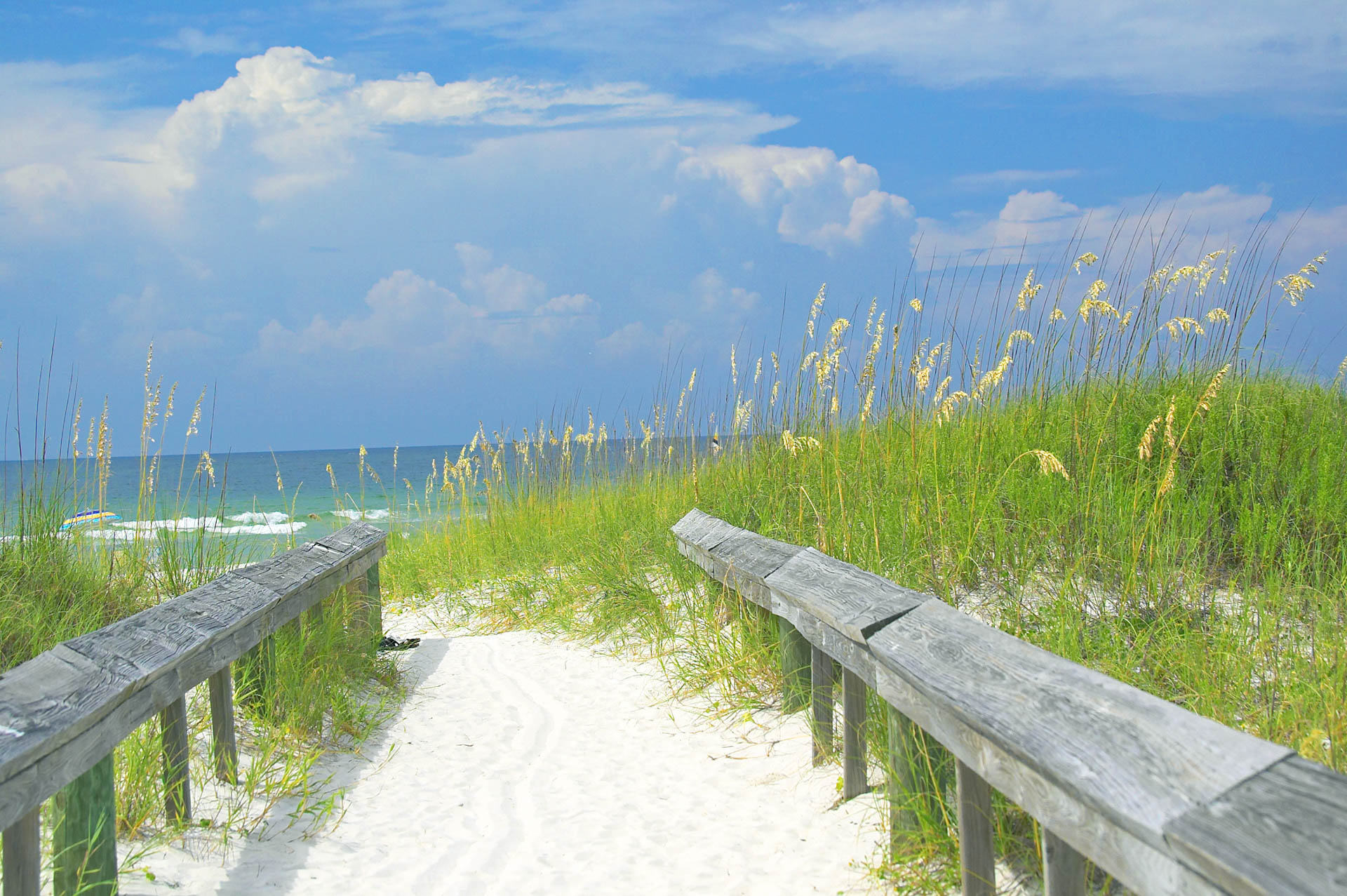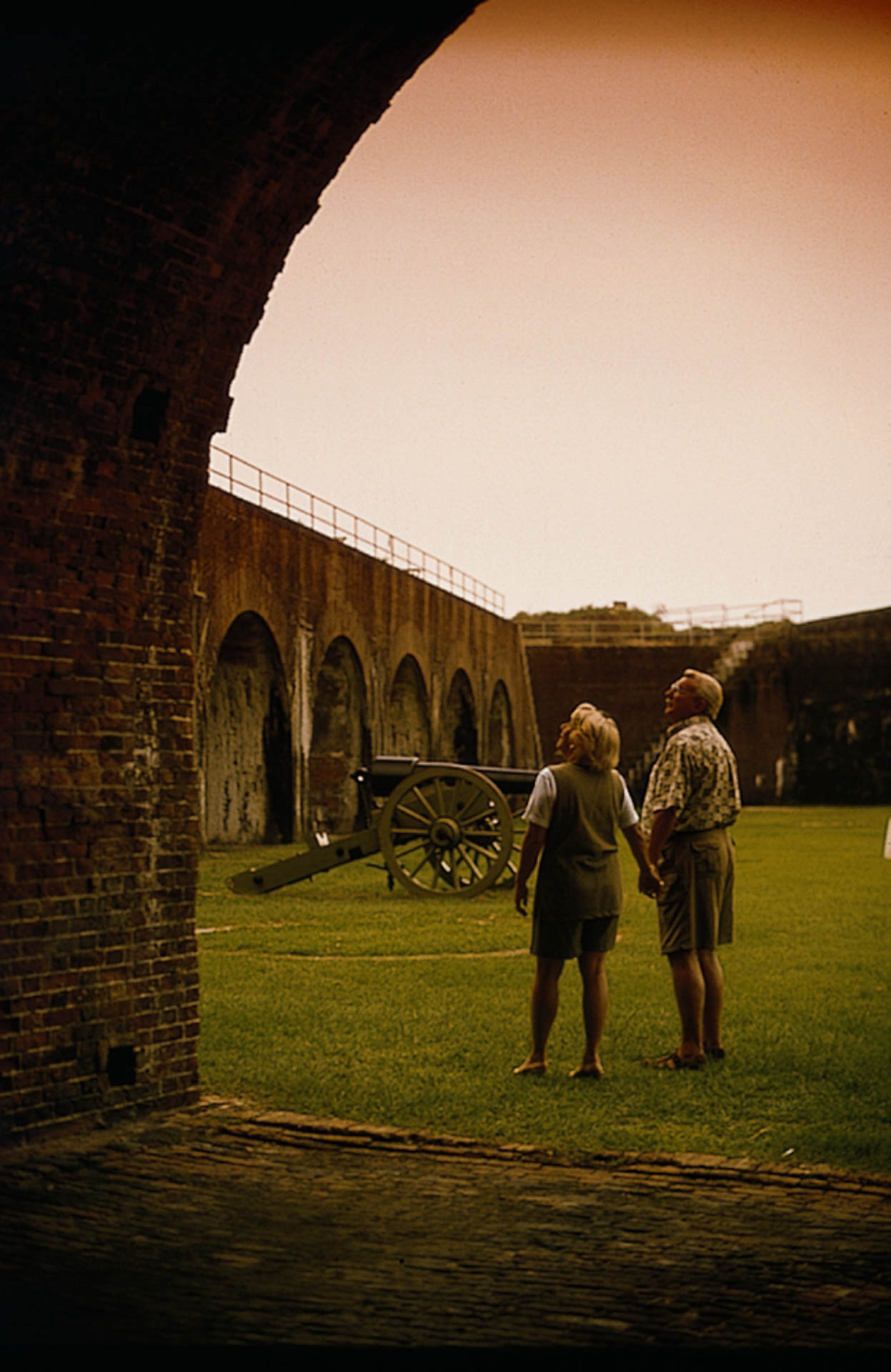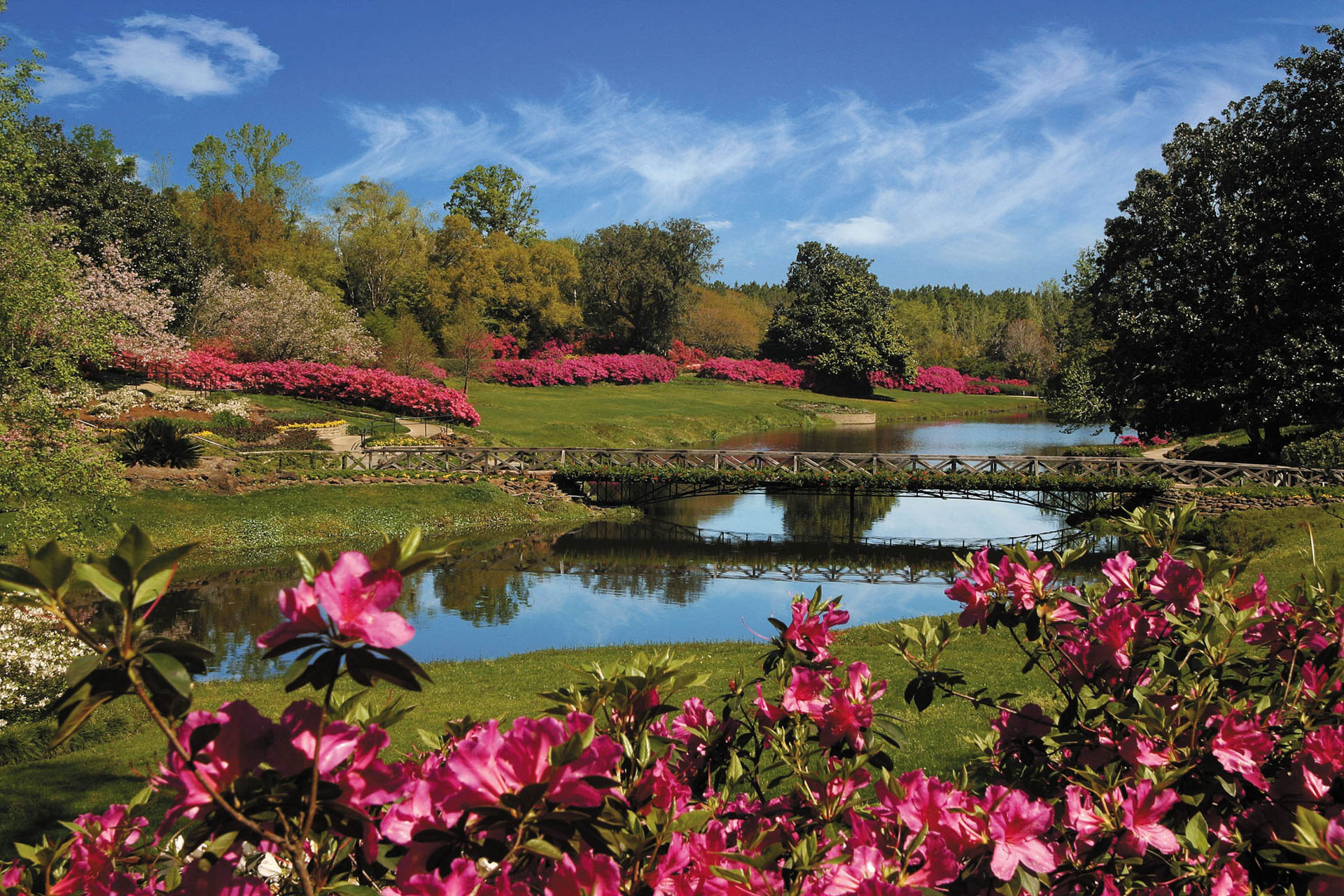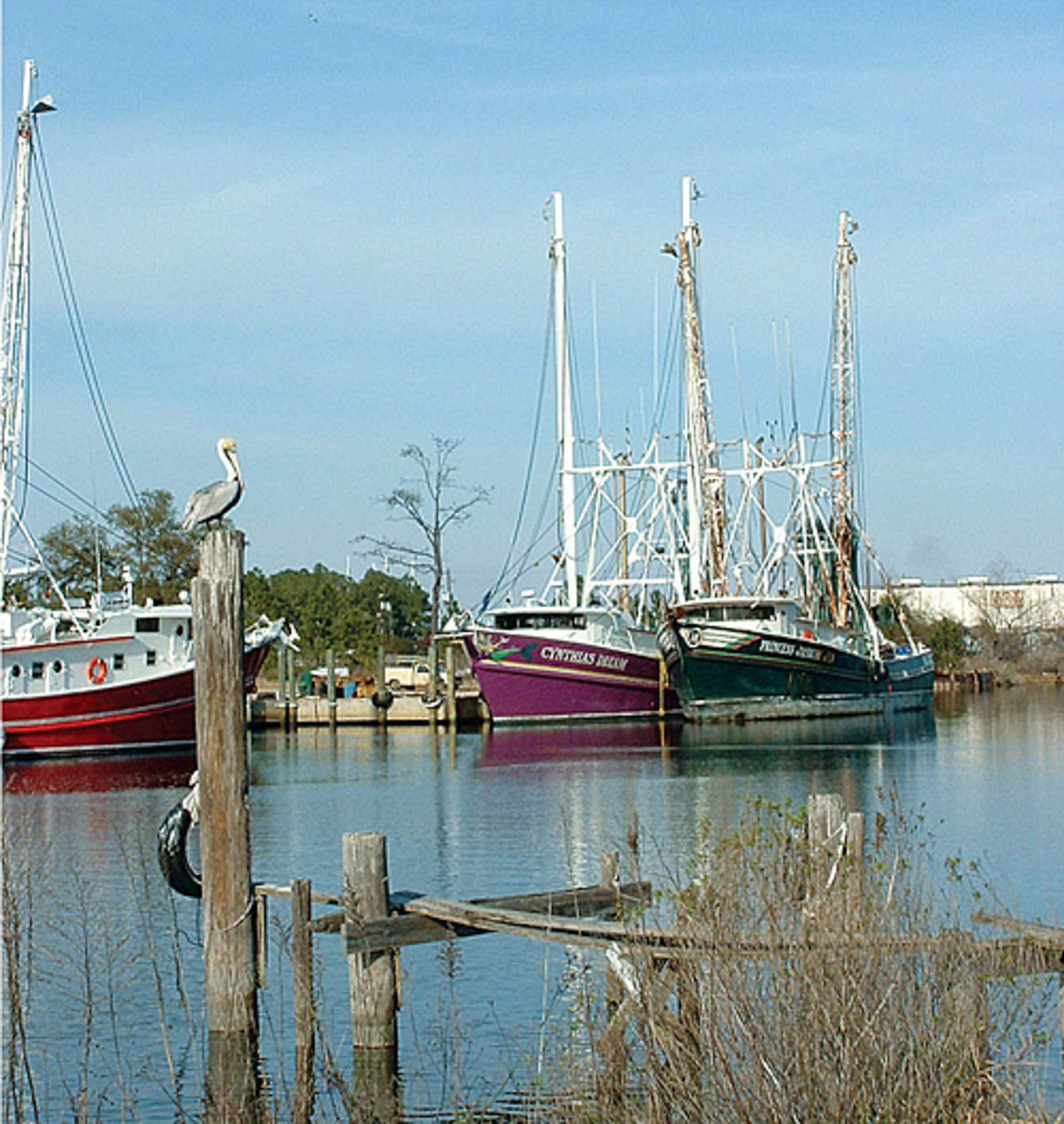Alabama Coastal Connection National Scenic Byway
State Designation: April, 2004
National Designation: October 2009
Alabama’s Coastal Connection: The Waters, Ways and Wildlife of Alabama’s Gulf Coast
Alabama’s southern tip is one of those places where even first-time visitors find a connection. Here, they experience the link between the traditions of the Deep South and a more laid back island lifestyle; between the wildlife of thousands of acres of preserved lands and the good life of a beachfront vacation; between the gunships of past naval battles and the countless recreational opportunities of the present. It’s all there, right before their eyes and visitors make their own connections from the moment they take in one of its exceptional views: the sun sinking into the warm Gulf of Mexico; the weathered halls of a 150-year-old brick fort; the flutter of a colorful neo-tropical migrant bird; a fishing boat easing from the dock at sunrise.
The byway’s story as told through its website, has several chapters: Connecting with Nature, Connecting with the Past, Connecting the Land and Sea, and Connecting with Each Other. Through these stories travelers are invited to experience Alabama’s Coastal Connection and The Waters, Ways and Wildlife of Alabama’s Gulf Coast.
This route and the waterways it follows are significant to the state of Alabama and the region for many reasons. Among them, the National Historic Landmarks of Fort Morgan and Fort Gaines; the protected lands of the Dauphin Island Audubon Sanctuary, Bon Secour National Wildlife Refuge, Weeks Bay National Estuarine Research Reserve and Gulf State Park; beaches, which are the number one tourist destination in the state; and a unique culture of working
waterfronts. Each offers unique scenic settings.
The waters of Alabama’s Gulf Coast create its strongest connections. While the scenic, natural and recreational values of the Gulf, bays, lagoons and bayous cannot be disputed, it is their cultural value that started it all. Making a living from the waters is a tradition that is alive and well here. Shell mounds hold the stories of early inhabitants who lived off the bountiful waters. Shrimp and charter boats are captained by those who still make their living that way. And research vessels carry those dedicated to understanding the waters and to preserving the ecosystems that are so dependent upon them.
Historic Forts Gaines and Morgan stand united around the mouth of Mobile Bay. In earlier times they stood guard against enemies and their cries of “Damn the torpedoes.” Today, the brick and wooden fortresses tell the stories of those battles and their soldiers to the many visitors who step onto their grounds.
The Dauphin Island Audubon Sanctuary, Bon Secour National Wildlife Refuge and Gulf State Park provide more than 12,000 acres of protected lands along the coast. Weeks Bay National Estuarine Research Reserve is one of only 27 such reserves nationally and is literally where the soil meets the sea. Indigenous wildlife, seasonal migratory birds and a variety of native plants are common sites. Bon Secour National Wildlife Refuge alone boasts bio-diverse habitats
including beaches and sand dunes, salt and freshwater marshes, scrub forests, fresh water swamps and uplands.
All these and other assets on Alabama’s Gulf Coast provide a distinct visual setting for those who enjoy its scenic aspects, as well as its recreational ones. While enjoying a stroll along the shore at sunset or a quiet sail on the bay or back waters suits some, others may opt for more exciting recreational opportunities. Golf and offshore fishing are popular pastimes. And here, dining is definitely recreation! Seafood is standard fare and can be prepared any way imaginable.
A variety of accommodations are available, making the shore accessible to those looking for a campsite, a family-friendly beach house, a luxury hotel or anything in between.
Alabama’s Coastal Connection has much to share and it beckons travelers to make their own connection and to learn more about The Waters, Ways and Wildlife of Alabama’s Gulf Coast.
